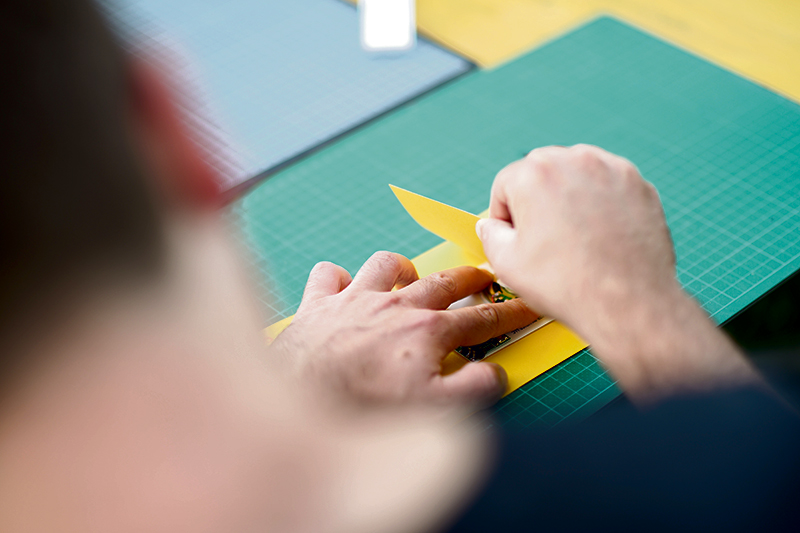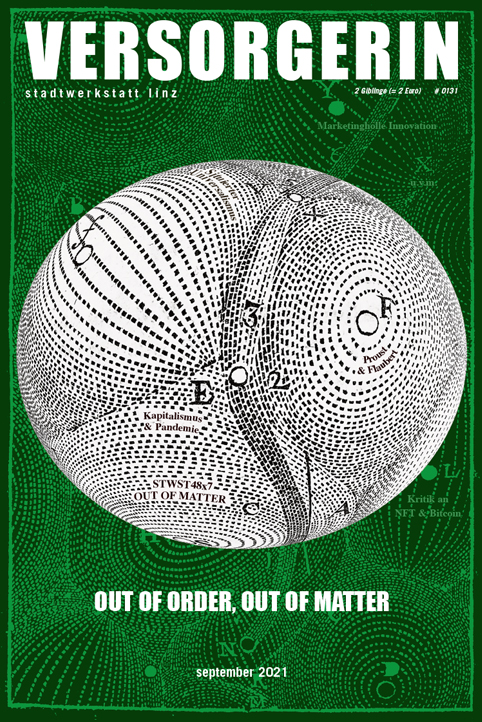In your residency at servus.at, you focused your research on the topics of networked intimacy and ambient awareness. Can you introduce them to us?
The idea behind the Center for Networked Intimacy is to research ways that technology affects our ability to connect with other people. Networked Intimacy is not only about romantic relationships: it deals with how networks influence our ability to be intimate with another person, it‘s really about personal communication and how this is infiltrated by devices and social networks. And it does not start at a specific moment or build upon a defined technology: we cannot say that »the day Arpanet was invented was the day networked intimacy came to be«.
Even if Networked Intimacy is not grounded on a specific platform or even the internet at all, any specific device or media involved plays a role. For example, cellphone communication is part of it and the use of different portable, handheld devices surely changed how one-to-one distant relationships work. But potentially also paper networks like bulletin boards are carriers of intimacies and influence how people perceive being part of a specific community.
I guess many of these topics became visible and felt especially during the pandemic.
Definitely. The ways we communicate with people were already influenced by social media before the pandemic, but during lockdowns this escalated. After the Center for Technological Pain I was interested in creating other centers and exploring the ways other technological phenomena influence humans. So from talking about pain that comes from using your device, I started looking at how our relationships are influenced by these devices or how our environment is also changed by technology. It was a natural follow-up to the Center for Tech Pain, and my thinking on the subject was helped by the contribution of Nishant Shah at last AMRO Art Meets Radical Openness, when I started thinking about the next Center for Networked Intimacy.[1]
What did you discover during your residence at servus?
I did research on very different things to build the workshop. For example I explored the gamification of relationships through apps like Tinder and how these apps influence how we relate to others, where all we do is just looking at people‘s faces and just saying yes or no in order to meet up with someone. I also read sociological / anthropological studies on the limits of human sociality and how this might be challenged by social media. And in this phase, the concept of »ambient awareness« stood out to me a lot and seemed very useful for grounding the workshop. »Ambient awareness« is a sociological term that describes the feeling of being connected with someone through technology. It specifically involves the impression of »closeness« thanks to the knowledge of what a person is feeling or doing. Importantly, this information should reach us through online media and not directly from the interested person.
It sounds like it is a kind of enhancement of one’s social perception through the internet ...
In a sense I think you can call it that. It‘s a way of feeling connected to someone without ever putting any effort into it. This definitely changes the way we are communicating with people: if I follow someone online and I constantly see what they‘re doing without talking to them, the day I see them I already know everything they‘re up to and there‘s not the same barrier of trying to get to know that person or their feelings. You don’t have to ask what they‘re doing and all of a sudden you feel like you can approach them a lot easier.
But is this something that facilitates or actually blocks meaningful relations?
It does a bit of both. To a certain extent there are a lot of people that maybe I would actually reach out more, had I not been following them on social media. Instead I don‘t feel the need to write to someone and see how they‘re doing because I already know it. So I‘m actually less connected to some people. There are also other downsides, for example the addiction aspect of it, which is visible through the amount of time we waste on social media ...
That supports the idea that we are more and more isolated whilst being hyperconnected, a society in which over the last 18 months digital media replaced the ways we used to relate to each other. How do you see this affect the future return to normality?
When things started opening up again and you could visit some friends, it was really hard to speak to people in person, especially if it was a group of more than three or four people. It was very awkward and didn‘t feel natural. You didn‘t know how to approach someone or how to react if you were approached by someone else. It was almost like the muscle memory of communication was lost between the lockdowns. Eventually we‘ll go back to the way it was before Covid, but I also think that some people will probably be forever changed by the experience, for example the ones that struggled mentally more during lockdowns and suffered the absence of social interactions.
The workshop was then good practice to warm up the atrophied social muscles. How did it work?
In the workshop, participants were invited to actively think about people they were not in touch with and why. With the group we discussed ambient awareness and then we tried to define with each participant who could be a person that they feel this awareness with. Following that, they could create a card for that person. The audio module embedded in the card became a space to be vulnerable and to talk to the recipient of the card by recording a message, for example why you‘re not in touch and how this makes you feel. This happened in a do-it-with-others crafting moment, where everyone produced with scissors and paper a card, which was kind of a central aspect of it.
Also within the Center for Technological Pain I was quite conscious about the potential of making physical work. This is something I noticed in the last few years, as many artists produce mainly video works, which makes it also really hard for curators to come up with an exhibition in which not everyone‘s just a work on a screen. Visitors get really excited with objects.
But the actual reason for choosing the postcards is because I thought that it would be funny to make valentines for someone that you‘re connected to only through digital spaces. Now cards are not really a thing that people send anymore, but they still relate from intimacy with people even to love relationships. I wanted to revive that. And for the audio modules, I always thought those cards that made a sound were really funny and I‘ve always dreamed about recording my own message on it.
In the crafting I felt I was disengaging with the superficiality of buying greetings cards. I also thought that online relationships are similar to these cards, because they are pre-defined as the communication formats in online platform. We had to think about a message and had fun in looking for very bad jokes to use in the card, but thinking about this one relationship was also quite emotional. It felt like an occasion to start again with someone without really having to do that – which was very relieving.
I would not push anyone into actually sending the card, because for me it was more important that the person would think about reconnecting with someone or focus on the emotions that are recalled.
Maybe somebody records a message that is way too personal or way too honest, they don‘t necessarily want to share it with the recipient, especially if you are in close contact. That‘s also totally fine. You don‘t have to be so open. Maybe just this act of recording this message and really admitting to yourself how you feel about this relationship with someone else will make you want to reach out to them again in a different setting.
The Center for Technological Pain is also based upon multiple workshop situations or instructions compiled by you. What is the role of the fictional institution in your practice?
The Center for Technological Pain came out of the necessity to organize my thoughts in one place because I started making the objects and I decided to do the instructions and then I thought it would be cool to do the workshops... Everything came all at once and I didn‘t know how to organize it or how things related necessarily from the beginning. Creating a sort of fictional company was a good way to present the work and its different aspects because I felt that it would be good for all of them to be together and form a larger context of what the project is.
And what motivates you in producing workshops?
Workshops create a different setting than exhibitions and widen the audience spectrum of the institutions. Museum visitors are always the same kind of people: they already know all about the subjects and they don‘t even read the wall text because they think they get it in a couple of seconds. I feel it‘s hard to engage people in a proper way in an exhibition setting without doing a proper guided tour. In workshops, you don‘t have to have any preconceived notions, but you don‘t need to have any prior familiarity with a topic or any sort of education on the matter. It depends on the workshop, of course, but I try to build them in a way that everyone at least gets something out of it. Even if it is only a decorated piece of cardboard. I mean, that‘s kind of the point of a workshop, right? You have to participate to figure out what it‘s actually like.
dashailina.com
Center for Networked Intimacy
Dasha Ilina is a Russian digital artist based in Paris whose work explores the relationship we develop with the digital devices we use on a daily basis. This summer she spent two weeks in residence at servus.at to develop her new work Center for Networked Intimacy. Davide Bevilacqua, servus.at, interviewed her.
[1] See: https://radical-openness.org/en/programm/2020/intimacy-and-its-technological-discontents-3-theses-while-social-distancing
Davide Bevilacqua is a media artist and a curator interested in network infrastructures and technological activism, as well as in curatorial and artistic research about the framework conditions in which artistic practice is presented and transmitted to the audience. His current topics of research are the environmental impact of technology and internet sustainability, digital greenwashing practices and platform capitalism. Davide coordinates servus.at cultural program since 2018.
http://www.davidebevilacqua.com/
https://core.servus.at/

(Bild: Giacomo Piazzi)
